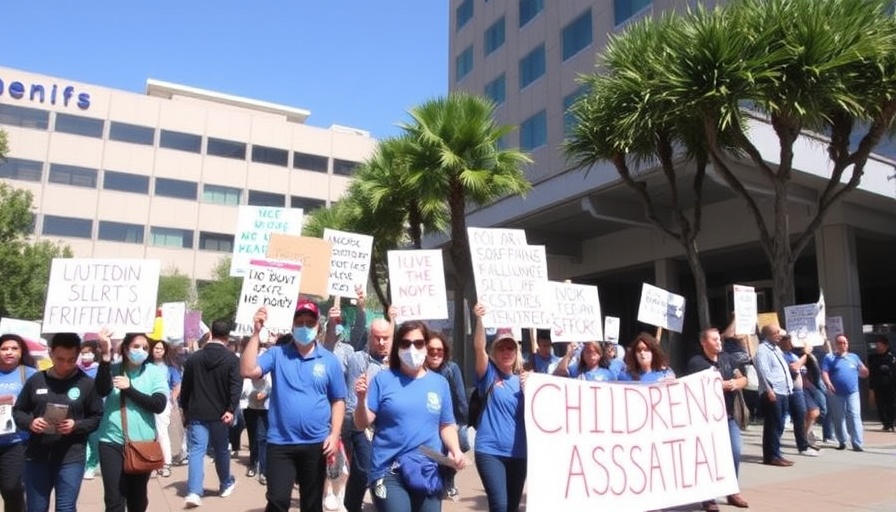
A Significant Labor Disruption Comes to an End
On Monday evening, workers at UCSF Benioff Children's Hospital in Oakland concluded their strike, a move brokered by the National Union of Healthcare Workers (NUHW). The strike had begun on June 18, fueled by concerns over UCSF’s controversial integration plan, which workers argue threatens their employment contracts and financial stability.
Controversy Surrounding the Integration Plan
As UCSF intends to classify the hospital's existing staff as its employees, fears have emerged that this shift would lead to significant reductions in take-home pay. The union represents approximately 2,500 employees, including nurses and support staff, all facing the prospect of lower wages due to increased contributions towards health insurance and retirement plans. It's estimated that some workers could lose as much as $10,000 annually, which has ignited apprehensions about the long-term viability of their current compensation package.
Legal Challenges Ahead
Although the strike officially ended, the battle is far from over. Legal proceedings are set to unfold, with a hearing scheduled for July 17 to address whether UCSF's integration plan violates existing contracts with hospital staff. Union representatives are unequivocally determined to push back against these changes, underscoring that the health of labor negotiations will require scrutiny and advocacy.
Stakeholder Opinions: A Dual Perspective
While hospital officials acknowledge that some employees might experience a decrease in take-home pay, they contend that the integration will provide access to improved pension plans and comprehensive long-term benefits. This presents a stark dichotomy in perspectives: on one hand, the promise of better benefits contrasts sharply with immediate financial losses perceived by many workers. The effectiveness of these changes remains a point of contention among stakeholders.
The Bigger Picture for Healthcare Workers
This situation highlights an ongoing trend within healthcare facilities regarding labor negotiations and employee rights amidst operational restructuring. The resolution of the disputes at UCSF Benioff Children’s Hospital could serve as a bellwether for similar conflicts across the region as healthcare systems grapple with both employee satisfaction and financial sustainability.
As the people of Bakersfield follow these developments, the outcome could influence future discussions around employee rights and benefits within the healthcare sector.
 Add Row
Add Row  Add
Add 



Write A Comment